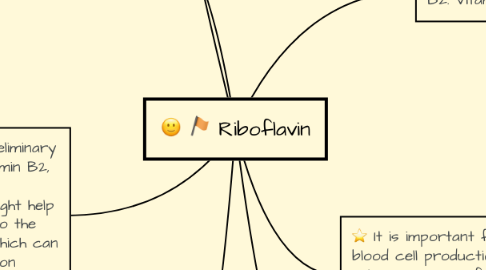Riboflavin
by deni iturbide

1. The first observation of a pigment in milk with yellow-green fluorescence was made by the English chemist Alexander Wynter Blyth in 1872, but it was not until the early 1930s that the substance was need as riboflavin.
2. Riboflavin's primary role in the body is supporting your metabolism, helping you access energy from the nutrients that make up your diet. It also helps your body break down fats and carbohydrates into fuel
3. The following foods provide riboflavin in the diet: Dairy products Eggs Green leafy vegetables Lean meats Legumes Milk Nuts
4. There is some preliminary evidence that vitamin B2, along with other micronutrients, might help prevent damage to the lens of the eye which can lead to cloudy vision (cataracts).
5. Riboflavin is also known as vitamin B2. Vitamin G and lactoflavin.
6. It is important for body growth and red blood cell production and helps in releasing energy from carbohydrates. This vitamin works with other vitamin B's.
7. Important things to know: Eye-related Eye-related diseases There is some preliminary evidence that vitamin B2, along with other micronutrients, might help prevent damage to the lens of the eye which can lead to cloudy vision (cataracts)


